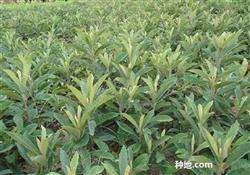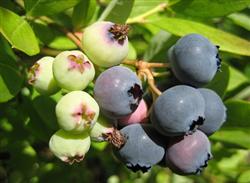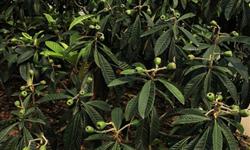What is the characteristic of loquat tree needing fertilizer?

What is the characteristic of loquat tree needing fertilizer? How to fertilize loquat trees reasonably? Also ask the netizens who know to help introduce that reasonable fertilization can make loquat trees get a bumper harvest, so the planting network has sorted out the fertilization methods of loquat trees, which are listed in detail below for netizens' reference. 1. The principle of fertilizer demand of loquat tree: loquat tree is a plant with high potassium demand, and the potassium content of loquat fruit is almost 3 times that of nitrogen. Too much nitrogen fertilizer, large fruit, but strong color and taste, poor appearance and quality; if too much potash fertilizer, the fruit contains more sugar, but the meat is rough. Therefore, all kinds of fertilizer elements should be matched properly. 2. Fertilization time of loquat trees: 1. Young loquat trees should be fertilized 5-6 times a year, and the method of thin fertilizer should be applied frequently, about once every two months. Each plant is treated with 15-25 kg of rotten rare human (pig) manure and urine (20% of the concentration), or 150-250 g of imported compound fertilizer. 2. The fertilization time of fruiting loquat trees: the first fertilization was applied from May to June. It is mainly to supplement the nutrients consumed by the results, restore the tree potential, promote the sturdiness of summer shoots, and promote root growth and flower bud differentiation. Give priority to quick-acting fertilizer, combined with deep ploughing, apply a large amount of mature organic fertilizer. The proportion of nitrogen, phosphorus and potassium fertilizer is generally 3:2:2. The amount of fertilizer applied accounts for about 40% and 50% of the total amount of fertilizer applied throughout the year. Late-maturing varieties can be applied in advance before fruit harvest. Taking Loquat-Shaped Cake with a yield of 35 kg as an example, each loquat tree should apply imported compound fertilizer 0.75-1.0kg and chicken manure 10-12kg. The second fertilization is from September to October, the flower bud differentiation is basically finished in autumn, and applied when the flower ear begins to appear, in order to provide the nutrition needed for flowering and fruit and vegetative autumn shoot, promote flowering well and improve the cold resistance of the plant. Mainly organic fertilizer. The ratio of nitrogen, phosphorus and potassium is generally 5:4:5. The amount of fertilizer applied accounts for about 30% and 40% of the annual fertilizer application. Each plant is 10-13 kg of chicken manure. The third fertilization was applied after fruit thinning from February to March. The function of this fertilization is to promote the growth of spring shoots and roots, provide nutrients for the growth of young fruits, promote the growth of young fruits, reduce fruit drop, and promote and enrich spring shoots. With the application of available fertilizer combined with compound fertilizer, the ratio of nitrogen, phosphorus and potassium fertilizer is generally 3:4:3. Such as more phosphate fertilizer in the soil, or less hanging fruit at that time, the proportion of phosphate fertilizer can be reduced. Those whose trees are not growing will increase the proportion of nitrogen fertilizer. The amount of fertilizer applied accounts for about 20% of the total fertilizer application in the whole year. 30-50 kg of rotten rare manure and urine, 0.3-0.6 kg of imported compound fertilizer and 0.25-0.5 kg of potash fertilizer were applied to each plant. February is the period of the largest root growth in the whole year, and the depth of fertilization should be shallow to avoid root damage. Foliar fertilization: when loquat trees bear fruit for a long time, they are sprayed with foliar fertilizer solution 2-3 times before the rapid expansion period of the fruit (0.2% color 0.4% potassium dihydrogen phosphate, 0.2-0.4% urea and 0.2-0.3% potassium sulfate), once every 10 days. Third, the fertilization method of loquat tree: 1. Ring fertilizer method: dig a ring ditch outside the crown of loquat tree, apply fertilizer into it, and then cover the soil. The basic fertilizer ditch should be deeper, 40-50 cm, and the topdressing ditch should be shallow, 15-30 cm. The fertilizer ditch should be moved out year by year. This fertilization method has the advantages of simple operation, economical use of fertilizer and so on. However, it is easy to cut off some fast-growing horizontal roots, and the range of fertilization is small, which should be paid attention to in selection. 2. Disk fertilization method: take the trunk of loquat tree as the center, rake the soil into a disk. The place that depends on the trunk is shallow, the farther away from the trunk, the deeper it is. There are also those who only make flat-bottomed fertilizer plates. The raked soil is piled around the outside of the plate, forming the edge of the ridge. After fertilizing, cover the soil. This method is suitable for topdressing because it is applied shallowly and the water is easy to hurt the root. However, long-term application of this method will cause the root system of loquat tree to move up. 3. Radiation ditch fertilization method: with loquat trunk as the center, 6-8 incident trenches were dug outward at 60-80 cm away from the trunk, 20-30 cm deep, and fertilized in the trench. The position of the ditch was changed every other year or every other year to increase the absorption surface of loquat roots. This method has less root injury, and if combined with circular fertilization, the effect of fertilization is better. But when digging trenches, you should avoid the big root so as not to damage it. 4. Strip ditch fertilization method: open a ditch on both sides of the water dripping line of loquat crown, or between rows or plants of loquat orchard, the furrow of applying basic fertilizer should be deeper, 50-60 cm, and the topdressing ditch should be shallow, 15-30 cm. Then apply fertilizer to the ditch, and then cover the soil. The next time you apply fertilizer, you can change the other sides and move outward year by year, combined with deep ploughing and ripening soil. This is a better method of fertilization. 5. fertilizer application method in the whole garden: for the adult loquat garden, the root system of loquat trees has been spread all over the garden, and the fertilizer can be evenly distributed throughout the garden and turned into the soil. If the whole garden fertilization is combined with strip fertilization or radiation ditch fertilization, the fertilizer effect can be better developed. In this method, the fertilization is shallow, and it is easy to make the loquat root move up. 6. foliar fertilizer spraying: foliar topdressing is a method of dissolving fertilizer in water and spraying it directly on the leaves of loquat trees, so that the leaves can absorb and utilize nutrient elements directly. The method of topdressing outside root is simple and easy, the amount of fertilizer is small, and the absorption and utilization is fast. Extra-root topdressing plays an important role in protecting flowers and fruits, promoting fruit development, improving quality, correcting element deficiency, improving fertilizer efficiency (preventing soil chemical or biological fixation) and regulating loquat tree potential. However, the effect of extra-root topdressing is short, which can only play an auxiliary role and can not completely replace soil fertilization. Leaves are the center of physiological and biochemical activities of loquat trees. The stomata and stratum corneum on the leaves have the ability to absorb fertilizer. The back of the young leaves during the growing period has a strong ability to absorb fertilizer. Usually, the leaf absorbs the same fertilizer as the root system. Under acidic conditions, anions are easily absorbed, while under alkaline conditions, cations are easily absorbed. Most of the trace elements used in extra-root topdressing are simple fertilizers. Extra-root topdressing in spring, the concentration can be slightly higher; in summer and autumn high temperature and drought season, the concentration should be appropriately lower, so as to avoid fertilizer damage. When many kinds of fertilizers are mixed, the suitable concentration should be reduced proportionally. In addition, it can also be combined with pest control spray for extra-root topdressing, but we must pay attention to the acidity and basicity of fertilizers and medicament types, acidity and alkalinity can not be mixed. 7. Drip irrigation fertilization method: drip irrigation fertilization method is also an advanced fertilization and irrigation technology. The utility model has the advantages of timely supply of fertilizer, uniform distribution of fertilizer, no root damage, protection of soil structure, less labor and less fertilizer consumption. However, at present, there are many problems in production, such as the water quality can not meet the requirements, and it is easy to cause emitter blockage and so on. It needs further technical improvement before it can be widely used in production. The method of letting loquat trees bear more fruit loquat flower thinning method
- Prev

What is blueberry anthocyanin?
What is blueberry anthocyanin? What are the functions of blueberry anthocyanins? Also ask netizens who know to help introduce blueberry fruit with delicate pulp, tiny seeds, sweet and sour taste, and refreshing and pleasant aroma, and blueberry contains the highest content of anthocyanins of all fruits and vegetables, blueberry anthocyanins.
- Next

How to make loquat trees bear more fruit?
How to make loquat trees bear more fruit? What are the ways to achieve this? Also ask experienced netizens to help introduce planting loquat trees to obtain high yield and high quality loquat, mainly to improve the fruit setting rate and fruit quality of loquat, so the planting network sorted out the fruit thinning and fruit protection methods of loquat tree, which are listed in detail below.
Related
- Moge, come on! The staff of the peasant association in the producing area of cantaloupe were frightened when the crowd gathered.
- Causes and Solutions of low Fruit setting rate of Apple
- Symptoms and control measures of passion fruit virus disease
- Fruit growing lesson: how do apple orchards keep high yields?
- Can you build orchards in the mountains? What are the pros and cons?
- How to manage the coloring period of Crisson grape?
- This paper introduces the processing technology of two kinds of fig products.
- How much is a month for retired teachers in rural areas by 2020?
- How can strawberry planting increase sugar content? We should pay attention to management in many aspects.
- What are the cultivation techniques on how to improve the yield of golden fruit?

